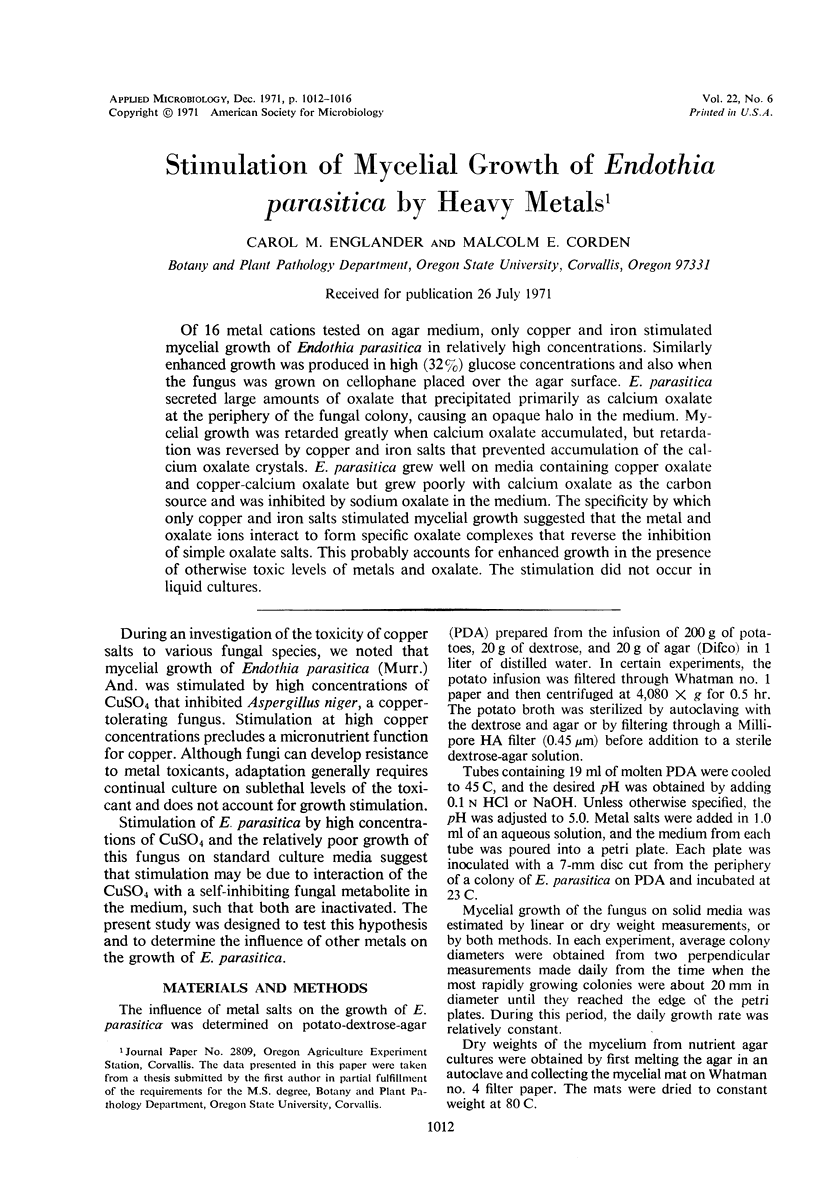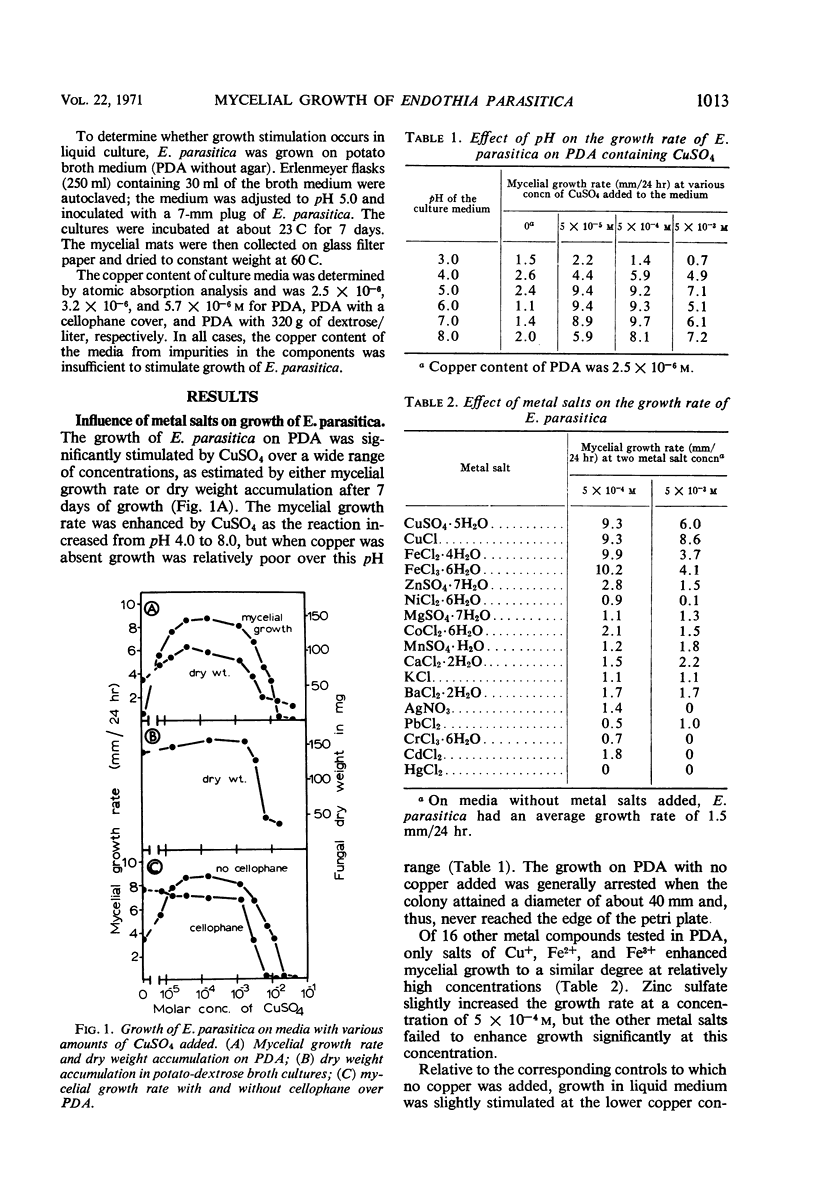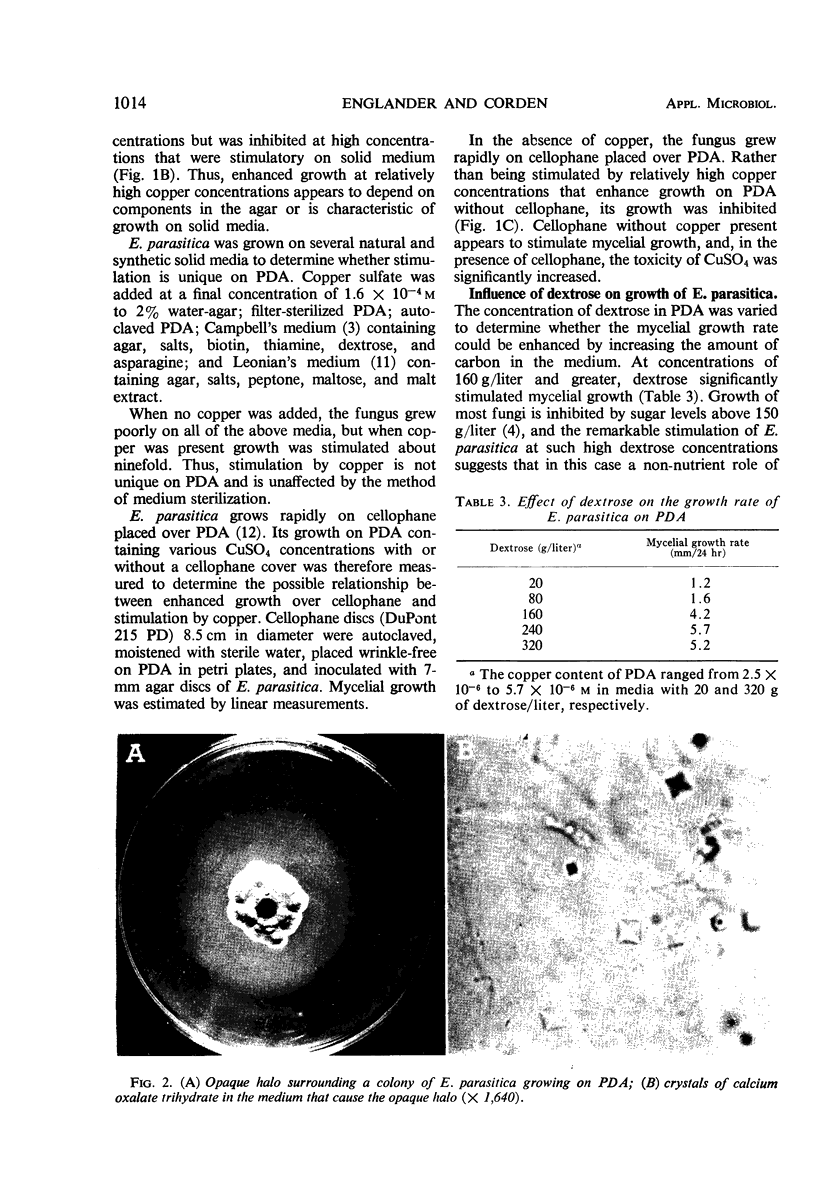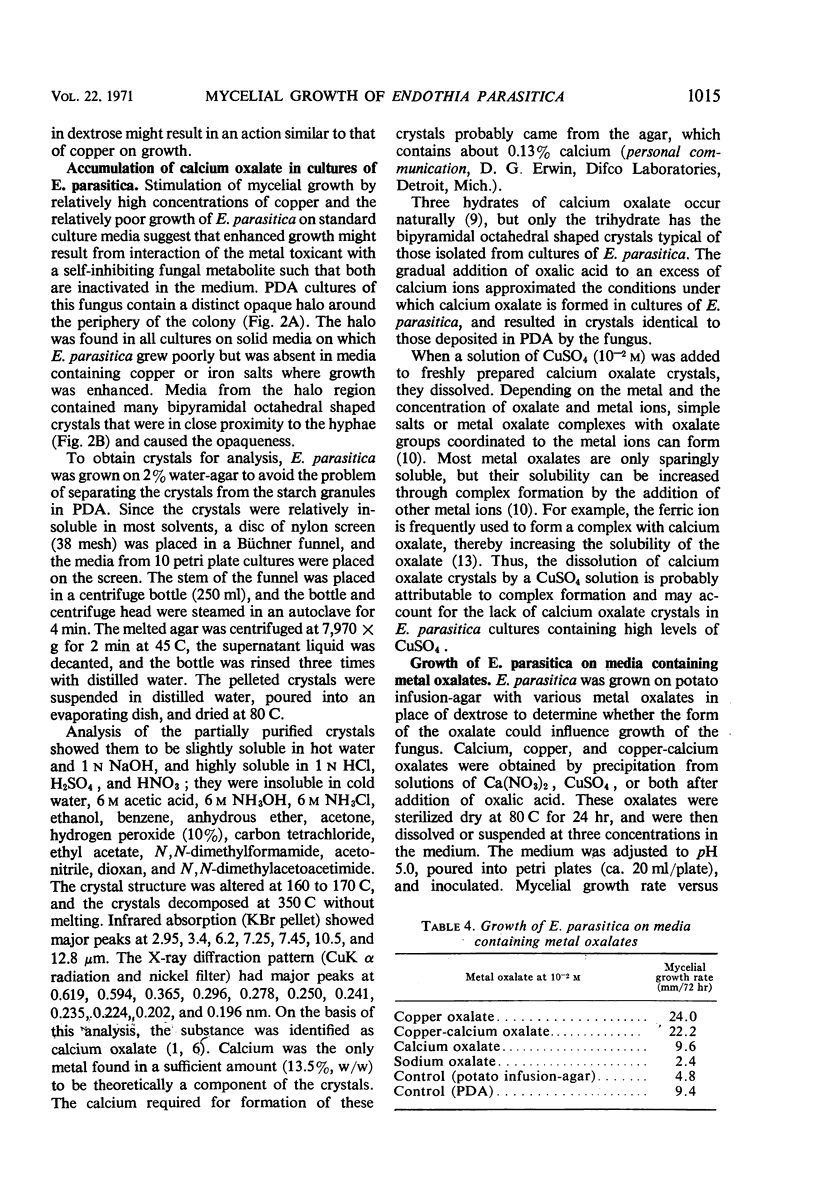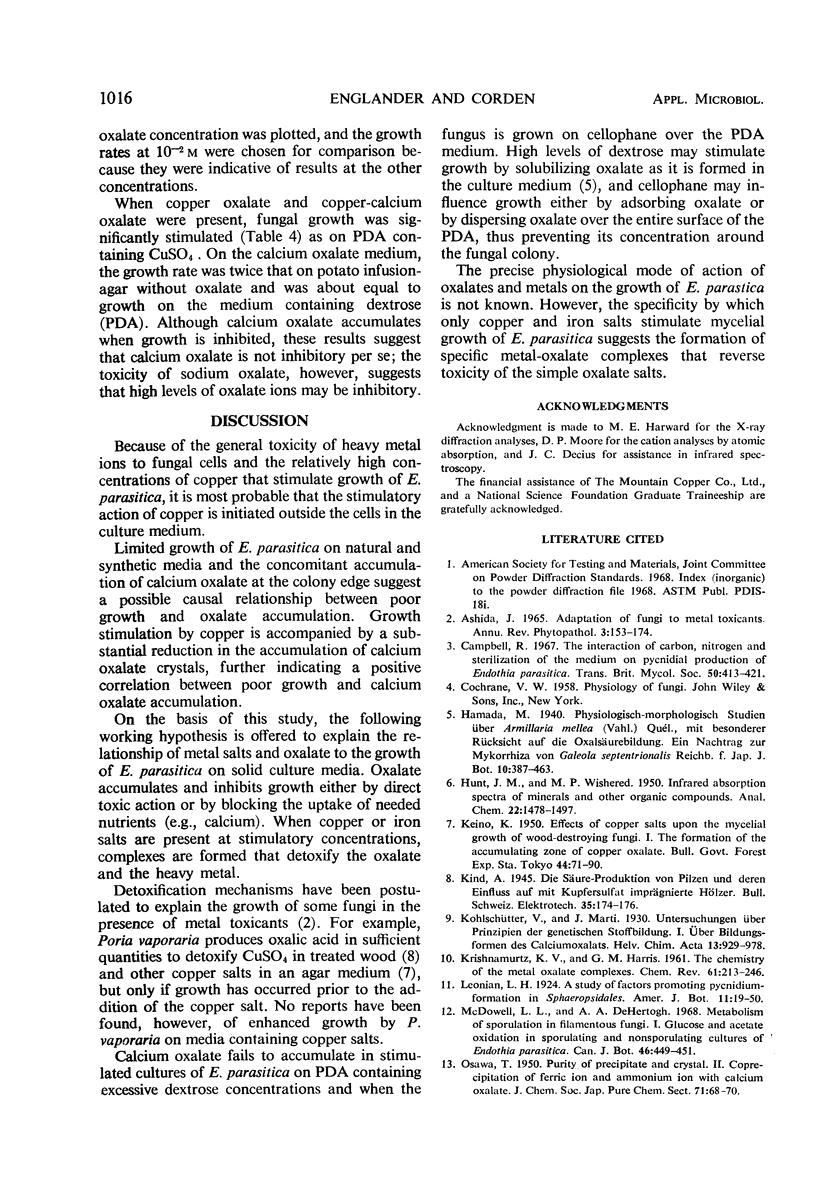Abstract
Of 16 metal cations tested on agar medium, only copper and iron stimulated mycelial growth of Endothia parasitica in relatively high concentrations. Similarly enhanced growth was produced in high (32%) glucose concentrations and also when the fungus was grown on cellophane placed over the agar surface. E. parasitica secreted large amounts of oxalate that precipitated primarily as calcium oxalate at the periphery of the fungal colony, causing an opaque halo in the medium. Mycelial growth was retarded greatly when calcium oxalate accumulated, but retardation was reversed by copper and iron salts that prevented accumulation of the calcium oxalate crystals. E. parasitica grew well on media containing copper oxalate and copper-calcium oxalate but grew poorly with calcium oxalate as the carbon source and was inhibited by sodium oxalate in the medium. The specificity by which only copper and iron salts stimulated mycelial growth suggested that the metal and oxalate ions interact to form specific oxalate complexes that reverse the inhibition of simple oxalate salts. This probably accounts for enhanced growth in the presence of otherwise toxic levels of metals and oxalate. The stimulation did not occur in liquid cultures.
Full text
PDF